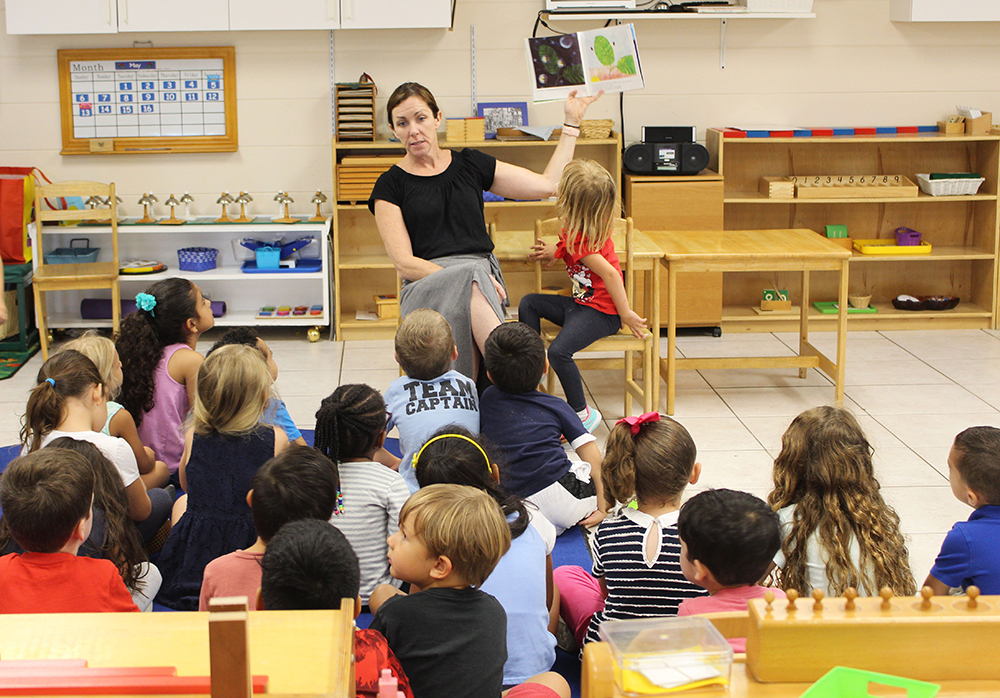
Language from Spoken to Written
The joy of learning is evident to all parents; there is always jubilation over a child's first spoken word.
The Montessori preschool classroom emphasizes spoken language as the foundation for all linguistic expression. Throughout the entire Montessori environment, the child:
- Hears and uses precise vocabulary for all the activities.
- Is encouraged to converse with peers and staff.
- Is taught to read phonetically as the child is ready.
The concrete materials, from the sandpaper letters to the beginning of sentence analysis, allow the child to take small, logical, sequential steps to independent, fluent reading. Language work leads into cultural subjects, extending the child's vocabulary and working with the child’s fascination of his or her environment.









